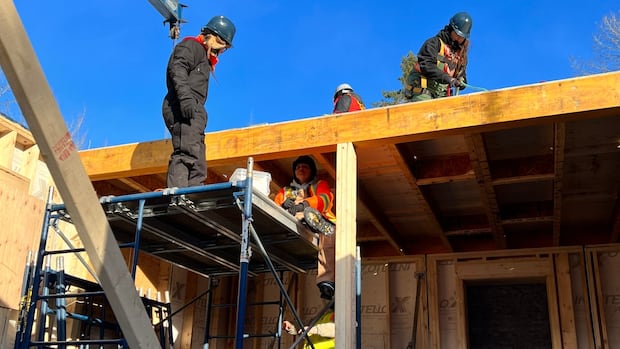A three-year study has revealed an apparent increase in moose activity around Saskatoon, according to researchers from the University of Saskatchewan.
Kaitlyn Harris is a PhD student focused on wildlife in urban environments. She was inspired by conversations she was having about moose sightings seeming more frequently in Prairie cities.
“Specifically there was that incident a couple of years ago, that really scary incident where that moose crashed into that school,” she said. “Thankfully there was no one harmed. The moose wasn’t harmed, no one was harmed.”
That led her and fellow researcher Ryan Brook to look into the topic.
Harris and Brook started thinking of ways they could predict moose movements and mitigate these incidents.
They set up cameras around Saskatoon and were able to observe increased moose activity near urban areas, which moose had previously avoided.
“All of our data came from this network of trail cameras that we have set up distributed throughout the city of Saskatoon,” said Harris. “We had 30 that we set out.”
Brook, a professor in the department of animal and poultry science at the U of S, noted that 50 to 60 years ago, moose sightings in southern Saskatchewan were uncommon.
He was previously involved in moose research 10 years ago. That study included GPS tracking of moose between Regina and Saskatoon.
“Moose don’t belong in these [urban] areas,” he said.
“I remember when I first moved here, we’re driving to Regina and I made my wife pull over because I had to take a picture of a moose crossing sign thinking, ‘what fool put this sign up? My friends are going to get a kick out of it,’ until we passed five more and realized this is moose habitat.”
Brook said it’s becoming more common to see a moose in urban areas like Regina and Saskatoon.
“There was one swimming around how many years ago was in Lake Wascana for multiple days in the summer,” he said. “Then this moose broke through a glass window and came into a school. This is pretty serious stuff.”
A moose on the loose in Saskatoon in 2021 inspired researchers at the University of Saskatchewan to see if more of the animals are coming into cities. Ryan Brook talked to The Morning Edition about why the subject excites him and whether it’s becoming more common.
Brook said that while many people love seeing wildlife, some animals just aren’t suited for city living. Moose — along with black bears, wild pigs and cougars — can pose a safety risk.
The only way to ensure everyone’s safety is to remove the animals safely to habitats they are more accustomed to.
Brook said his research is trying to figure out hotspots for these animals. After putting up the cameras, they had some interesting findings.
“We actually have over 200 photos of moose showing up in these photos,” he said. “We had 249 photos and it was across 12 cameras out of 29.… We have some, of course, on the very periphery of the city of Saskatoon, and some much more in the inner city.”

He said each year sees an increase in the month of July, just after moose breeding season.
“What happens is females, right before they give birth, any calves they have from previous years, they’ll boot them away and say ‘you’re out on your own junior, take off. I’m going to have my calf by myself and that’s that,'” he said.
Those calves who have been following their mom around are left to wander on their own and sometimes end up wandering into cities and getting into trouble, Brook said.
He said the best thing to do if you spot a moose in an urban area is to keep your distance, because they are aggressive and will attack people.
“The only real option to manage them in cities is for the province to dart them and take them somewhere out in the wild and move them far out of the city,” he said. “They’ve been doing that really successfully for a long time.”







